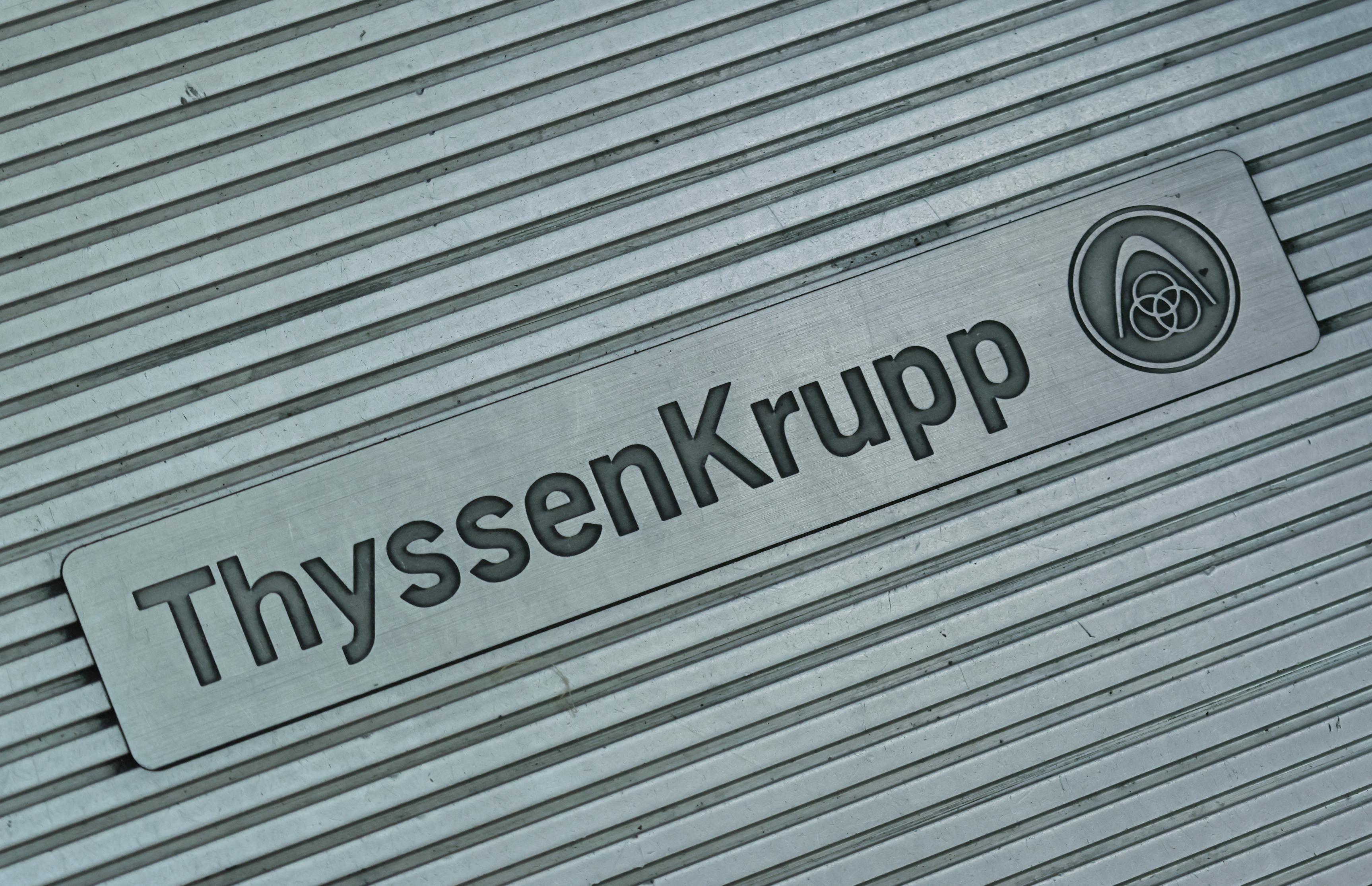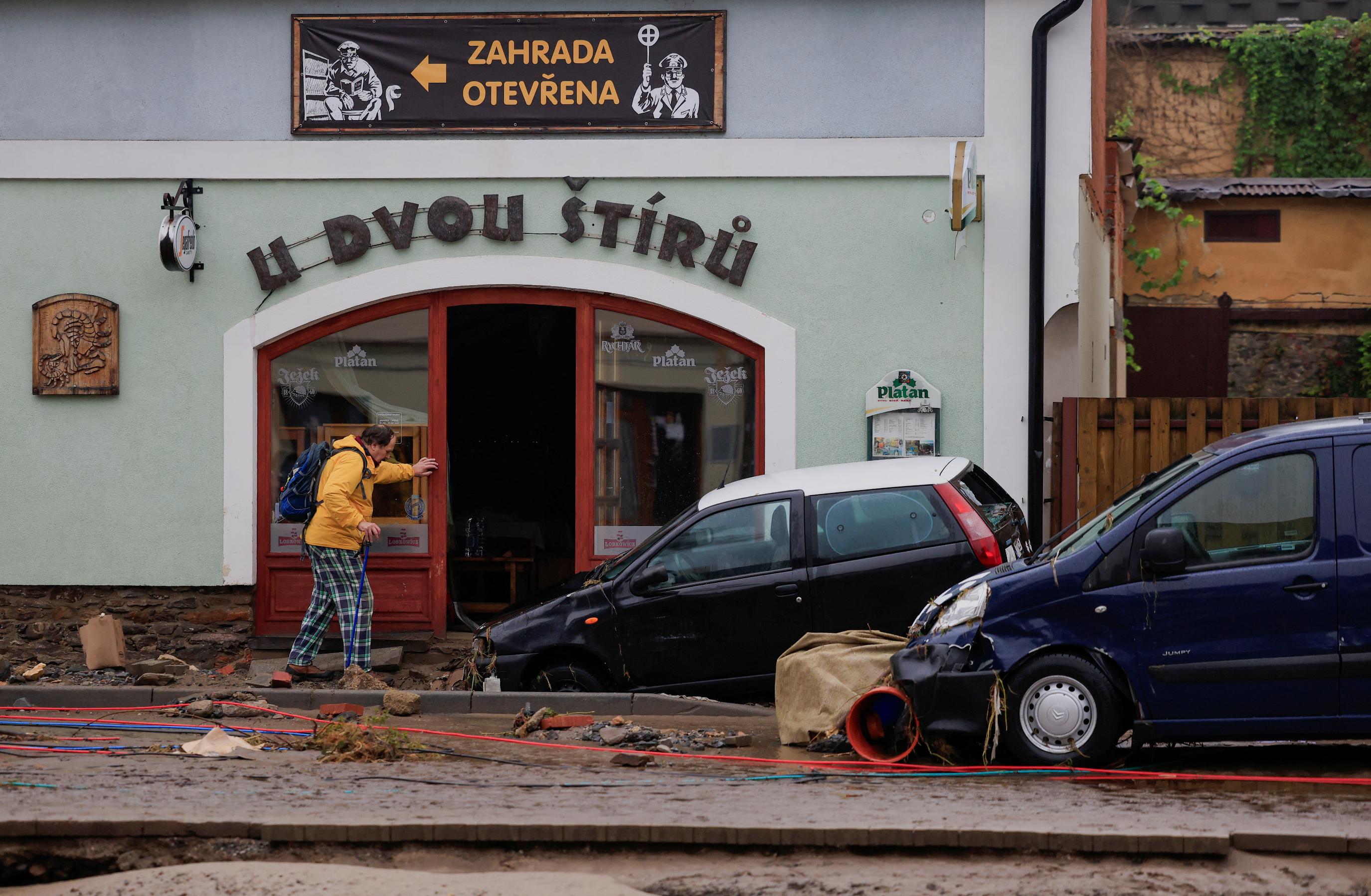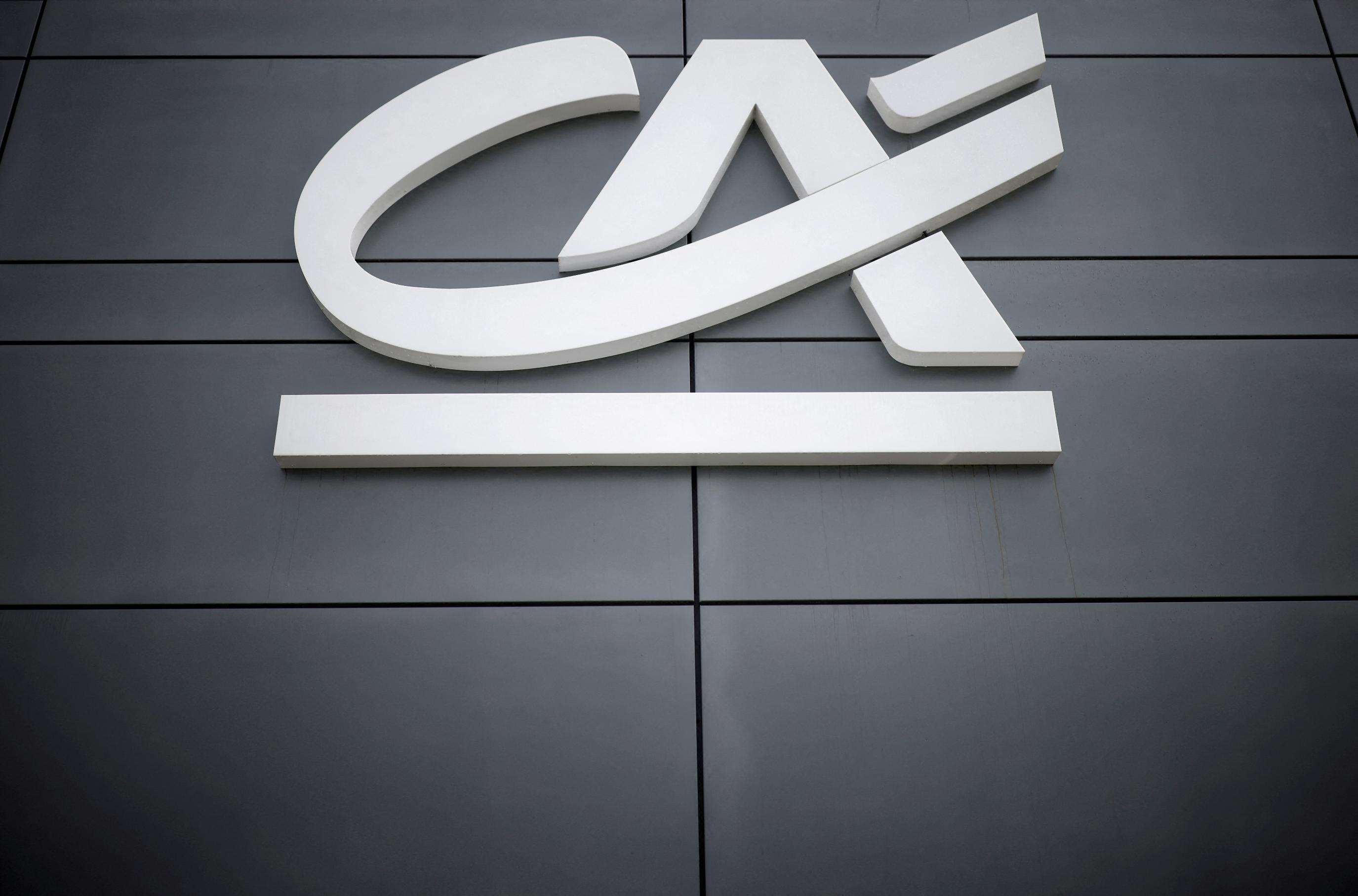
2024-09-16 11:47
HERNE, Germany, Sept 16 (Reuters) - Germany's Thyssenkrupp (TKAG.DE) , opens new tab must demonstrate its commitment to a planned 3 billion euro ($3.3 billion) green steel site, the country's Economy Minister Robert Habeck said, days after the company flagged the project's cost may increase. "It is very important that Thyssenkrupp clearly underlines that it wants to stick with the project," Habeck told Reuters on the sidelines of a visit to North Rhine-Westphalia. "If this doesn't happen, it will be difficult for the entire site," Habeck said, without elaborating. Thyssenkrupp Steel Europe (TKSE), in which Czech billionaire Daniel Kretinsky owns a 20% stake, last week said the planned direct reduction site in Duisburg could cost more than initially expected. Two people familiar with the situation, speaking on condition of anonymity, have said the increase could be an additional low-to-mid triple digit million euro sum. In a statement on Monday, Thyssenkrupp said it was assessing the situation and reiterated it had been informed of the risk of a cost increase. "We currently assume that the direct reduction plant can be realised under the given framework conditions," the company said in emailed comments. Steel production is a big contributor to carbon emissions and the industry has been trying to shift to green production that does not rely on fossil fuel. ($1 = 0.8991 euros) Sign up here. https://www.reuters.com/markets/commodities/thyssenkrupp-must-renew-commitment-33-bln-green-steel-project-habeck-says-2024-09-16/

2024-09-16 11:31
Rate announcement due on Sept. 19 All analysts surveyed predict unchanged rate of 4.50% Majority of analysts eye December cut, some say March OSLO, Sept 16 (Reuters) - Norway's central bank will keep its key policy interest rate unchanged this week at a 16-year high of 4.50%, all 27 economists in a Reuters poll said, as investors look for signs of when Norges Bank may eventually begin to cut borrowing costs. The central bank has said its monetary policy must balance above-target inflation, exacerbated by a falling currency, with a cooling economy that now sees low overall growth. Last month the central bank said Norway would keep rates on hold for "some time" to combat inflation, and it is expected to say on Thursday whether this means a cut could come by year-end or would wait until next year. Norges Bank's most recent forecast, released in June, called for three rate reductions in 2025, each by a quarter percentage point to end the year at 3.75%, with the first of those cuts slated for March at the earliest. The forecast will be updated on Thursday, and a majority of analysts in the Sept. 12-16 poll now expect a cut in December this year followed by four more cuts by the end of 2025 to a policy rate of 3.25%. Market pricing meanwhile predicts as much as seven rate cuts by the end of 2025, brokers said, reflecting expectations of steady rate reductions abroad, including by the U.S. Federal Reserve which will give a policy update on Wednesday. HAWKISH SURPRISE? But some analysts cautioned the weak currency could force Norges bank to hold back to avoid a further inflation-inducing drop against the euro and the dollar. "The market is in for a hawkish surprise, in our view," Handelsbanken said in a Sept. 12 note to clients, adding that the most likely timing of a cut was in March of next year. "The rate path will be lowered somewhat, but not to the extent that the market is anticipating," it added. Norway's core inflation, which strips out changing energy prices and taxes, eased to 3.2% year on year in August, down from 3.3% in July, in line with analysts' expectations but still well above the central bank's 2.0% target. Sign up here. https://www.reuters.com/markets/rates-bonds/norway-central-bank-keep-rates-hold-this-week-cut-december-2024-09-16/

2024-09-16 11:30
NAPERVILLE, Illinois, Sept 15 (Reuters) - Speculators last week bailed on short positions in Chicago grains and oilseeds for a second consecutive week as U.S. crops are finishing under a dry spell and drought is spreading throughout Brazil’s farmlands. Investors are still solidly bearish across corn, soybean and wheat markets, but their corn views are no longer historic. In the week ended Sept. 10, money managers cut their net short position in CBOT corn futures and options to 132,134 contracts from 176,211 a week earlier. Most of that move stemmed from short covering, but funds added gross longs for a third consecutive week. From late June to early September, funds’ net corn short was the largest ever for the time of year. Last week’s reduction brought the position nearly even with the same dates in 2023 and 2019, though at this point in those years, investors had just come off the long side and were adding shorts. Money managers’ net short in CBOT soybeans is still the largest ever for the time of year, but they reduced the position through Sept. 10 to 130,601 futures and options contracts from 154,096 in the prior week. That was due to short covering and a slight reduction in gross longs, suggesting no bullish undertones to funds’ latest soybean move. Last week’s short covering in both corn and soybeans came despite modest declines in CBOT futures. Prices rebounded over the last three sessions, even as the U.S. Department of Agriculture confirmed its outlooks for massive U.S. corn and soybean yields. Traders may be thinking that the U.S. corn and soy harvest pegs could move lower from here given the exceptionally dry weather observed over the last several weeks. Eyes have also moved to Brazil’s top soybean and corn states, where soil moisture has dropped to the lowest levels in 30 years, likely delaying planting. Brazil, the world’s top soybean exporter, has been slated to raise a record crop in the upcoming season. CBOT December corn futures on Friday jumped nearly 2% to settle at $4.13-1/4 per bushel, the contract’s highest finish in seven weeks. November soybeans closed Friday at $10.06-1/4 per bushel, slightly below the month’s average so far. CBOT December wheat has surged nearly 8% over the last two weeks, topping out at $5.98-3/4 per bushel on Friday. That marked a 12-week high for the most-active contract. Dry weather in Ukraine and Russia may hamper winter wheat sowing and export tensions have flared up again between the two major suppliers. A Ukrainian grain vessel was hit by a Russian missile last week, according to Ukraine - the first missile strike on a civilian vessel transporting grains since the start of Moscow's invasion in February 2022. In the week ended Sept. 10, money managers cut their net short in CBOT wheat futures and options to a 15-week low of 29,397 contracts from 42,624 a week earlier. Funds’ wheat position is no longer unusually bearish for the date and is only about a third as large as their year-ago net short. Wheat futures late last week were nearly identical to those from the same week in 2023. On Monday, traders will be monitoring U.S. soybean and corn harvest progress as well as monthly U.S. soybean processing data, which is expected to show a record-large August volume. Weather forecasts for key regions of Brazil, Russia and Ukraine late last week showed dryness persisting throughout most of the next two weeks, and traders will be watching for any change in these outlooks that could help kickstart planting efforts. Karen Braun is a market analyst for Reuters. Views expressed above are her own. Sign up here. https://www.reuters.com/markets/europe/funds-cover-more-cbot-grain-shorts-amid-us-brazil-dryness-2024-09-16/

2024-09-16 11:30
ORLANDO, Florida, Sept 15 (Reuters) - Hedge funds are their most bullish on the Japanese yen in eight years, but as their 'long' positions grow and the currency strengthens, yen volatility is also rising. This raises the question whether the huge turnaround in the yen's fortunes recently, reflected in the rapid reversal of speculators' positioning as much as anything, is 'too much too soon' and that a period of consolidation at the very least is warranted. The yen has surged 15% against the dollar since mid-July and is now slightly stronger against the greenback year-to-date. Commodity Futures Trading Commission data show that hedge funds and speculators are now holding their biggest net long yen position since October 2016. Data for the week ending Sept. 10 show that funds held a net long position of 55,770 contracts, effectively a bullish bet on the currency worth nearly $5 billion. Measured in dollars, that is the biggest 'long' since February 2021. Measured by net holdings of CFTC contracts, it is the most bullish funds have been on the yen in eight years. A long position is essentially a bet that an asset will rise in value, and a short position is a wager its price will fall. Hedge funds' current positioning is worth putting in context. CFTC data shows that since yen futures contracts were launched in 1986, funds have only held a larger net long position for 33 weeks. And 16 of those were concentrated between February and October 2016. Whether reducing their net shorts or extending their net longs, funds' positioning has been increasingly yen-positive for 10 consecutive weeks. The last time they went on a streak like that was in 2012. There are good fundamental economic reasons for this, the most compelling of which is the divergent policy paths the U.S. and Japanese central banks are embarking on - the Fed is about to begin its interest rate-cutting cycle, the Bank of Japan has already started a historic yet tentative hiking cycle. Rates traders expect the Fed to cut rates by some 250 basis points by the end of next year and the BOJ to raise by 30 bps. The two-year and 10-year U.S.-Japanese yield spreads are now 320 bps and 280 bps, respectively, both the narrowest in two years. Late last year they were over 500 bps and 400 bps, respectively. Much of that narrowing will already be in the exchange rate price. Remarkably the yen is now slightly higher against the dollar this year and looks poised to break through the 140.00 per dollar level soon. But FX traders know that yen strength, especially sudden bursts of appreciation, is often associated with bouts of investor risk aversion, economic or financial market turbulence, and rising demand for 'safe' assets in times of uncertainty. Are any of these conditions at play now? Perhaps. The yen's rally has been powerful and quick as traders have unwound the so-called 'yen carry trade', and uncertainty around the U.S. economic outlook, Fed and BOJ is high. Little wonder, then, that yen volatility is high too. Three-month implied dollar/yen volatility is now around 12.00, the highest since March last year, and one-month implied vol recently scaled 15.00 for the first time since January last year. The Fed and BOJ both deliver their latest policy decisions and outlooks this week, and with speculative positioning as stretched as it is, yen volatility may stay higher for a bit longer. (The opinions expressed here are those of the author, a columnist for Reuters) Sign up here. https://www.reuters.com/markets/currencies/irrational-exuberance-funds-yen-longs-hit-8-year-high-mcgeever-2024-09-16/

2024-09-16 11:16
PRAGUE, Sept 16 (Reuters) - Factories and stores across central Europe shut down production lines and closed their doors on Monday due to flooding that has killed at least 10 people, forced tens of thousands to evacuate and submerged towns from Poland to Romania. In Ostrava - an industrial city of 290,000 people in northeast Czech Republic - the BorsodChem chemical plant was shut, a spokesperson for the company, partially owned by China's Wanhua Chemical Group (600309.SS) , opens new tab, said. The OKK Koksovny coking plant - one of the largest producers of foundry coke in Europe - stopped chemicals production but was continuing to keep coking batteries heated to minimum levels, spokesman Jindrich Vanek said. "There is water that has started rising and there must be a breach of the flood barriers," he said. "We are without electricity and we are heating our batteries with coking gas, keeping them at technological minimum." Czech soft drinks maker Kofola CeskoSlovensko (KOFOL.PR) , opens new tab said it was pumping water out of its production facilities in Krnov, some 70 km (44 miles) from Ostrava, and would have a better view on the length of the outage early next week. The company said it was premature to estimate damage and that it could cover supplies of most products from other plants. Border areas between the Czech Republic and Poland were hit hard over the weekend, following days of heavy rain. Some bridges collapsed and homes were destroyed, while villages and towns in eastern Romania were submerged. While rivers in the Czech-Polish border area were starting to recede on Monday, flooding was widening to more areas and leaving bigger cities in both countries on alert. Veolia Energie has shut its Trebovice electricity and heating plant, which has cut hot water and heating supplies to large parts of Ostrava following flood damage, the company said in a statement. "At the moment, the supply of heat and hot water in Ostrava is interrupted," the company said. "The key technologies remained undamaged and therefore if the situation develops favourably we estimate the restoration of supplies in a few days." TRANSPORT PROBLEMS An economist for Czech bank Ceska Sporitelna predicted industry in general would take a hit. "Industry will receive a negative impulse of one or two percentage points, while the construction sector will receive a positive impulse... thanks to the reconstruction of damaged buildings and infrastructure," Ceska Sporitelna Chief Economist David Navratil wrote. The Czech Confederation of Industry said some companies not directly affected by the flooding still had to stop production in hard-hit regions because or problems transporting materials by rail. Belgian firm Umicore (UMI.BR) , opens new tab said both its battery materials site in the Polish city of Nysa and its automotive catalysts facility in Nowa Ruda had been secured with limited impact from the floods. Power utility Tauron (TPE.WA) , opens new tab said six of its hydroelectric plants in southern Poland were not working due to the floods. More than 60,000 people were left without power on Monday morning, its press service said. Polish retailer Zabka said around 80 outlets were currently closed, mainly in the area around the southwest town of Klodzko. The shops were closed due to flooding, lack of electricity or evacuation ordered by the emergency services, its press service told Reuters via email on Monday. The retailer, owned by private equity fund CVC Capital Partners, added that it had provided water, provisions and transport support to its franchisees and was gathering information on their needs. Sign up here. https://www.reuters.com/world/europe/central-europe-factories-retailers-shut-flood-hit-areas-2024-09-16/

2024-09-16 11:14
LONDON, Sept 16 (Reuters) - France's second largest listed bank Credit Agricole (CAGR.PA) , opens new tab has decided to replace precious metals with trading in the regulated carbon markets starting from 2025, three sources with knowledge of the matter told Reuters. The move signals the increasing attraction of the world's most valuable carbon market - the EU Emissions Trading System (ETS) - to European banks. "Credit Agricole is exiting precious metals, it is managing existing risk and letting the book positions roll off," one of the sources said. "The bank is instead looking to focus on carbon markets with a view to commencing trading next year," the source said, adding that management was seeking to align the move to the carbon market with Credit Agricole's "green ambitions". Both Credit Agricole and Credit Agricole CIB, the corporate and investment banking arm of the French bank, declined to comment. The value of traded global markets for carbon dioxide permits reached a record 881 billion euros ($949 billion) in 2023, according to LSEG analysts. The EU's ETS represented 87% of the global total - 770 billion euros. The decision will not impact the precious metals market as Credit Agricole CIB's business - mainly trading derivatives related to the precious metals for clients - is small compared to the industry's giants. The bank, the sources said, has been gradually decreasing its presence there since taking a hit when the pandemic dislocated the gold market four years ago. Flight restrictions and precious metal refinery closures in early 2020 created worries that traders would not be able to move gold to the United States in time to deliver against futures contracts. As a result, gold and silver prices in London and New York diverged sharply, leading to high demand for exchange of futures for physical (EFPs), which allow traders to swap gold or silver futures positions to and from physical metal, and extreme volatility in EFP premiums. Many banks were able to weather the storm as they did not cut positions, opting to wait for the price gap to normalise. Credit Agricole chose to close its positions and realise the loss, two of the sources said, without disclosing the size of the position or loss. The bank's precious metals business, according to one of the sources, was making several tens of millions of dollars a year before 2020. For comparison, global gold trading volumes were estimated by the World Gold Council at $241 billion a day in August. "They did try to re-grow the business two years ago but never really got going unfortunately," said another of the sources. "The decision was then made to transfer the balance sheet to new markets like carbon to help bolster revenues." Sign up here. https://www.reuters.com/markets/europe/credit-agricole-cib-chooses-carbon-trading-over-gold-sources-say-2024-09-16/
